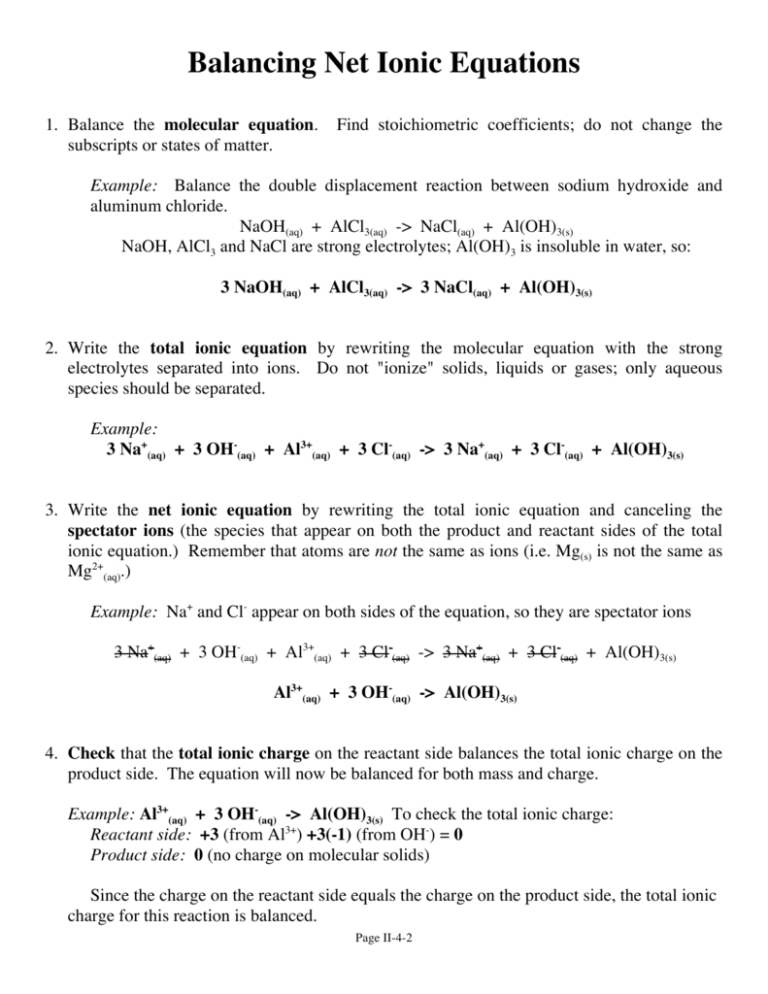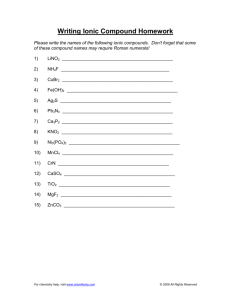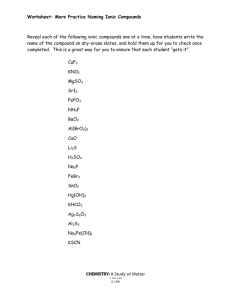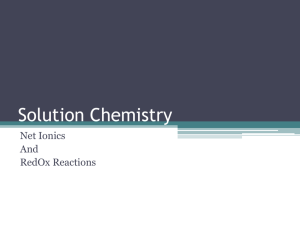Balancing Net Ionic Equations: A Step-by-Step Guide
advertisement

Balancing Net Ionic Equations 1. Balance the molecular equation. subscripts or states of matter. Find stoichiometric coefficients; do not change the Example: Balance the double displacement reaction between sodium hydroxide and aluminum chloride. NaOH(aq) + AlCl3(aq) -> NaCl(aq) + Al(OH)3(s) NaOH, AlCl3 and NaCl are strong electrolytes; Al(OH)3 is insoluble in water, so: 3 NaOH(aq) + AlCl3(aq) -> 3 NaCl(aq) + Al(OH)3(s) 2. Write the total ionic equation by rewriting the molecular equation with the strong electrolytes separated into ions. Do not "ionize" solids, liquids or gases; only aqueous species should be separated. Example: 3 Na+(aq) + 3 OH-(aq) + Al3+(aq) + 3 Cl-(aq) -> 3 Na+(aq) + 3 Cl-(aq) + Al(OH)3(s) 3. Write the net ionic equation by rewriting the total ionic equation and canceling the spectator ions (the species that appear on both the product and reactant sides of the total ionic equation.) Remember that atoms are not the same as ions (i.e. Mg(s) is not the same as Mg2+(aq).) Example: Na+ and Cl- appear on both sides of the equation, so they are spectator ions 3 Na+(aq) + 3 OH-(aq) + Al3+(aq) + 3 Cl-(aq) -> 3 Na+(aq) + 3 Cl-(aq) + Al(OH)3(s) Al3+(aq) + 3 OH-(aq) -> Al(OH)3(s) 4. Check that the total ionic charge on the reactant side balances the total ionic charge on the product side. The equation will now be balanced for both mass and charge. Example: Al3+(aq) + 3 OH-(aq) -> Al(OH)3(s) To check the total ionic charge: Reactant side: +3 (from Al3+) +3(-1) (from OH-) = 0 Product side: 0 (no charge on molecular solids) Since the charge on the reactant side equals the charge on the product side, the total ionic charge for this reaction is balanced. Page II-4-2








